#consistent braking performance
Text
why i believe alex replacing logan is the worst possible decision williams could make
#1: logan’s confidence
we saw this exact thing happen with checo last year. after his brief stint of trading wins with max, max continued to consistently wipe the floor with him via the gap in their performances. this continued to eat away at checo’s confidence until, by the end of the season, he was t-boning alex albon in singapore for no reason and somehow retiring twice in suzuka. now that there has been an extended break and he has had the chance to grind and truly work on himself nonstop, he has returned with incredible form. but who knows how long this will last? as soon as there’s a race that isn’t a red bull 1-2, he will be completely torn into and i believe the downward trajectory of last year will repeat itself.
this is very similar to what logan went through last year. once he was announced, there was so much hope for an incredible debut season, but that never came his way. i think the first big nail in the coffin was getting his first p20 at his home race and i think the biggest hit was qatar. even though he should never ever be ashamed of putting his safety first, i understand why, from an athlete’s perspective, he would look at that race as a failure.
fortunately for him, he has had a team with incredibly strong leadership backing him up. giving him the opportunities he needed, never giving up on him, celebrating the single point he scored last year like he lassoed the fucking moon, and re-signing him because he has such incredible potential as a formula 1 driver. everything went wrong for logan, except for williams, who did everything right.
except now, williams has publicly stated that they have no faith in him to score points. now the only support logan has is random fans at races, strangers on the internet, and his own friends and family. that must feel fucking awful. logan has been so positive throughout the struggles of this year and last, but he has to be hurting right now. there’s no way he isn’t.
logan sargeant is not a bad driver. you can disagree with me as loud as you want to, but i won’t hear a word of it.
absolutely stunning junior career aside, logan showed incredible improvement towards the end of the season. not only did he score a point in austin, but he came unbearably close in mexico, and if it weren’t for a hydraulics failure, he very easily could have had two points finishes in a row.
this year may seem like it has gotten off to a bad start for him, but i heavily disagree. in bahrain he had great pace and was steadily climbing closer and closer to the points when he had a brake failure. the car switched his balance completely on its own and made it literally impossible for him to turn. even max couldn’t recover from that.
in jeddah his pace was wonderful again. i think his biggest struggle currently is qualifying, but he was overtaking beautifully and making his way up the field. while 15th isn’t a spectacular finish, he was matching alex quite well throughout the whole race. (also jeddah sucks so he gets a pass 👎)
george russell did not score a SINGLE point during his rookie season for williams and he is now a race-winning future championship contender and beating his 7x wdc teammate in the standings at p4. logan has already beaten that AND he has an experienced driver that he seems to get on with quite well as a teammate to mentor him, which george didn’t have; he was william’s number one driver from day one. logan has so much potential that is only being hindered by his lack of confidence, unpreparedness (reminder he was brought to f1 an entire year earlier than he was originally supposed to be; they planned for him to be a 2024 rookie), and a shitty car.
#2: alex albon
now poor alex is in the worst position of his life. brother already probably feels like shit for putting logan through this (even though it is NOT his fault and he has absolutely zero say in this decision) and if he doesn’t score any points this weekend, he will be torn to shreds by the media.
i have already seen multiple posts including alex in their list of fuck yous. this will do incredible damage to him pr-wise and will also make him feel even worse if he doesn’t somehow pull off a miracle performance.
#3: albert park
alex is an incredible driver, constantly pulling a back marker car into the points. however, this is a track that he has historically struggled at (in the exact same turn might i add!!) for multiple years in a row. who’s to say this mistake could not be made tomorrow or sunday as well? that will make everyone involved look and feel horrible.
not to mention that the fw46 is NOT SUITED for albert park. AT ALL. vcarb’s official website describes it as a ‘medium-high’ downforce track, which is exactly what the car is suited to struggle with, making it nearly impossible for albono to score points (which, like stated before, will be terrible for him) as well as making this gp a likely inconsequential race! meaning this is the perfect opportunity to let logan drive on the limit and really showcase his true talent and capabilities as a driver.
but now williams has chosen to do the complete opposite and ruined logan’s trust in his team as well as any other offers from rival teams for him for the 2025 season. if logan’s own team would bench him for his teammate, why should they take him over a talented upcoming rookie? (this is a rhetorical question; i truly believe he has the potential to, with a good enough car and team behind him, become a race-winning driver in the future.)
#4: james vowles and the future of williams
james has justified this decision by mentioning how every race counts and that a single point can make a world’s difference in the midfield. while this is true, james has also been on the record multiple times saying that he doesn’t give two shits about this season (as well as the next few). he has stated that his goal is long-term, to rebuild the team and return it to its former success of the 90s and early 2000s. so why ruin the reputation of your driver who you have been supporting since his junior career over the possibility of a single point or two? that is a short-term solution, not a long-term one. james is usually a wonderfully eloquent speaker, however, he has completely contradicted himself here.
in my opinion, the best decision would be to race logan. while i love alex to death, he’s the one who crashed his car, completely on his own with no fellow drivers or failures on the car’s side to blame. logically, he should be the one to sit out the race, no?
like i briefly touched on before, i also think this is a golden opportunity to put logan in a race where they will most likely come away with nothing anyways and give him the opportunity to pull off something incredible (which he absolutely can under the right circumstances). if he was able to have a good drive on sunday, he would be a star and williams would look like geniuses. with this decision, everyone just looks like an asshole.
final thoughts
to conclude, i am no certified expert, but this decision makes zero sense to me, as it also does to many others from what i’ve seen. i usually wholeheartedly agree with all of james’ decisions, but this one beats me. i cannot for the life of me figure out why williams would choose this.
there is a part of me that hopes williams will reverse this decision before sunday in order to save themselves from all of the pr backlash they are facing, but i understand that that is very much wishful thinking. the only good thing that can come from this is williams finally learning how to be prepared and/or logan being able to channel his frustration into motivation (although i don’t think there’s any way for him to possibly work harder than he already has).
if anyone disagrees with me and thinks this is the right decision for williams to make, i would love to hear why. no one has to agree with me, these are just my personal thoughts on the situation.
-avis 🏎️💨
462 notes
·
View notes
Text

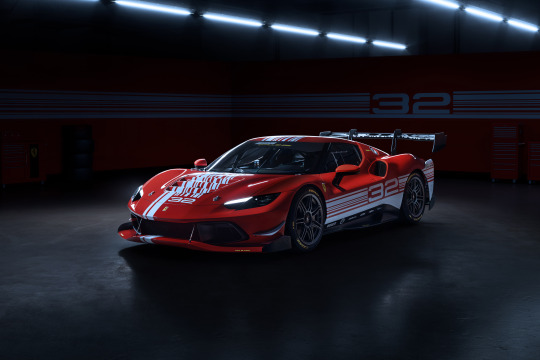


First Look: The Ferrari 296 Challenge
On the eve of the Finali Mondiali, which take place at the Mugello Circuit between October 24 & 30, Ferrari will present the 296 Challenge, the ninth model in the history of the Ferrari Challenge Trofeo Pirelli.
Due to debut in the Europe and North America series in the 2024 season, the 296 Challenge introduces a slew of new features with respect to the Ferrari 488 Challenge Evo and, in certain respects, is a revolutionary design.
The new 296 Challenge is the embodiment of an innovative new philosophy that has seen far-reaching work carried out on the road car to optimise its specifications for track use. Both in terms of performance and lap consistency throughout a race, the 296 Challenge rewrites the parameters of the Prancing Horse single-make series, offering solutions that closely mirror the specifications of the 296 GT3, which made its debut this season.
Derived from the 296 GTB, the 296 Challenge ushers in substantial modifications on the power unit, aero and vehicle dynamics fronts, all aimed at guaranteeing maximum performance on the track. It is the first car in the history of the championship to be powered by a 120-degree V6: the new model sports the 2992cc twin turbo engine without the hybrid component, a choice also made for the 296 GT3. The engine unleashes 700 cv with maximum torque of 740 Nm, with the result that the 296 Challenge sets a new power record for the segment with 234 cv/l.
The 296 Challenge’s aero package delivers downforce figures unprecedented in the single-make series’ history, ensuring the maximum efficiency in all conditions. In fact, the 296 Challenge generates in excess of 870 kg of downforce at 250 km/h with the spoiler at its maximum angle of attack.
The car sees the debut of ABS EVO Track, a specific adaptation of the innovative system introduced for the first time on the 296 GTB. With the addition of new CCM-R PLUS brake discs, both braking performance and consistency are improved. New, specifically-developed Pirelli 19” tires have also made a substantial contribution to the car’s handling and performance.
#Ferrari Challenge#Ferrari 296 Challenge#ferrari#cars#racing#first look#news#296 Challenge#supercars
66 notes
·
View notes
Note
Some commentators were saying that while Leclerc might be topping the FP2, Norris was the one who was actually fastest over one race lap. Is this true, you're my resident expert, I need you to tell me
Yeah no, this is the recency bias and British bias taking over. We saw them do the same thing for Carlos after he won too, they treated him like he was going to be the best forever. This is not shade at either Carlos or Lando, but if you look at the rhetoric used after their wins there are a lot of similarities. Especially with the British bias we see them cling to anything they can use to hype Lando. I don't think this kind of thing from the press serves either driver long term. It holds them to a ridiculous standard they are eventually going to fall short of.
But now to answer your question. Let's look at what the data shows.
FP1 - fastest laps
Charles - 1:15.969
Lando: 1:16.980
I don't think Lando got a really good run in FP1 but that's the data we have for that session.

Here is the FP1 graph. Ignore Charles on the hard tyres because that was a pace test. What we want to look at is the soft tyres and the overall top speeds. Again Charles was not only fastest on one lap, he was consistently fastest.

Here is their fastest lap. Lando and Charles were matched in sector one, Lando picked up time on that low speed turn, but Charles really built the gap in sector three mostly due to better braking.
FP2 - fastest laps
Charles: 1:15.906
Lando: 1:16.980
Here is the FP2 graph

Lando didn't do much on the softs so I don't want to do a fastest lap comparison here because he didn't really have much of a chance to really test that this session. However look at the far right on this graph where they are both on the mediums. Again across multiple laps Charles is consistently faster. There are a few where Lando has the edge, but it's not a majority. Lando being faster than Charles on 3-4 laps over the course of 2 free practice sessions in my opinion does not make him the fastest overall and it certainly does not show his pace is better.
Charles has been a full second faster than Lando, what are they talking about? Now Mclaren might not be going for all out top speed runs yet. But that doesn't matter here because the issue is what commentators and reporters are saying, and it doesn't line up with what we are seeing on track and in the data.
I have no idea why they wouldn't highlight Oscar more as he is currently the fastest Mclaren on the field for these sessions thus far.
Take all of this with a grain of salt because teams are testing things etc. I don't think this is the best of what either Charles or Lando have to offer this weekend. We will probably see both of them better come race day. The issue here is how this data is being reported on.
Sometimes commentators just say things. I really could not tell you why. Obviously Lando is in the spotlight because he's coming off a win, which I am sure is exciting for his fans and British fans especially. But they don't need to artificially hype him up, he's just in free practice and he's doing fine. Is he putting on a jaw dropping performance of speed? No. But it's free practice it doesn't matter.
Hope this helps!
19 notes
·
View notes
Photo
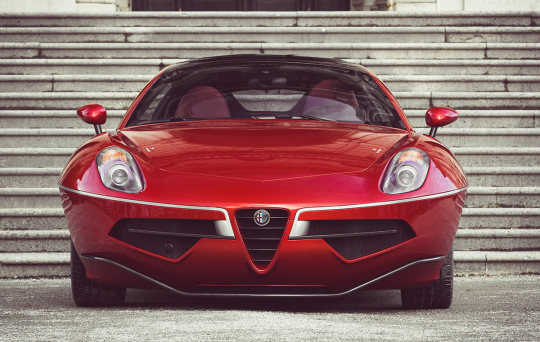
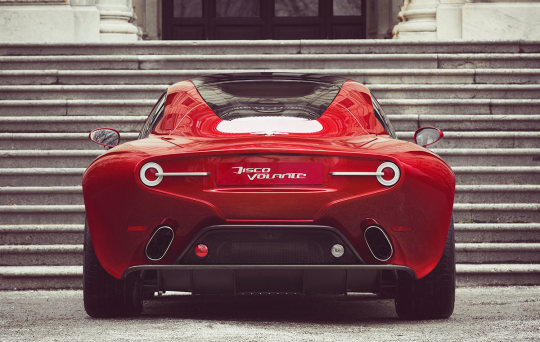
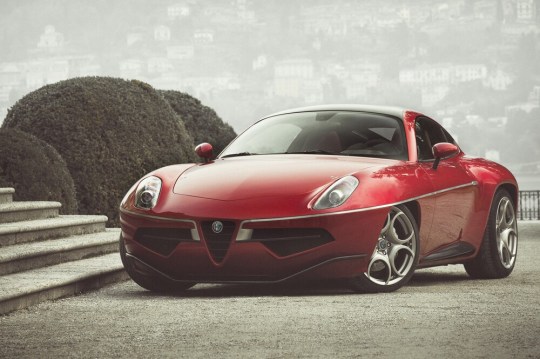
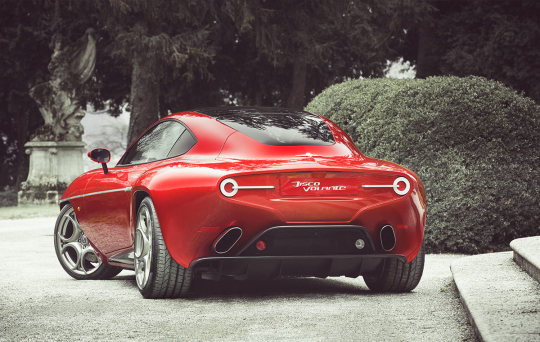
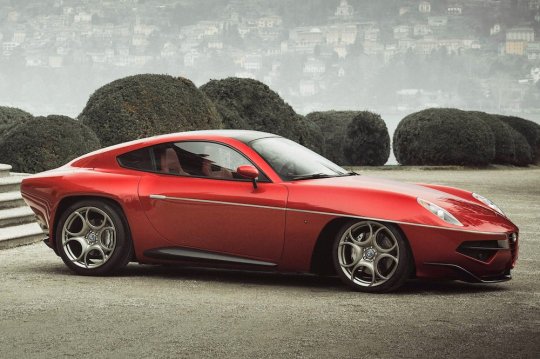
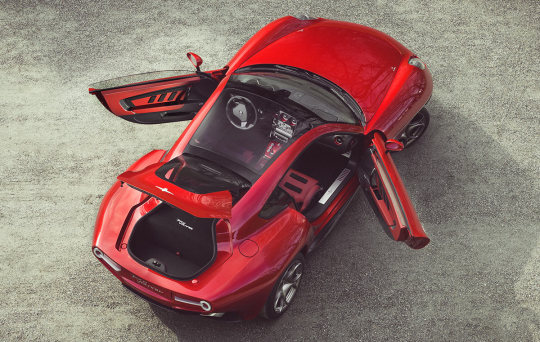


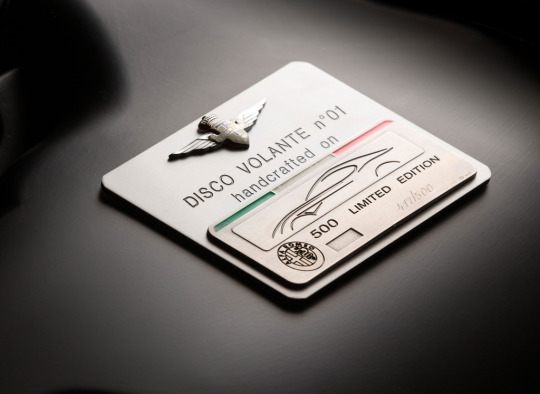
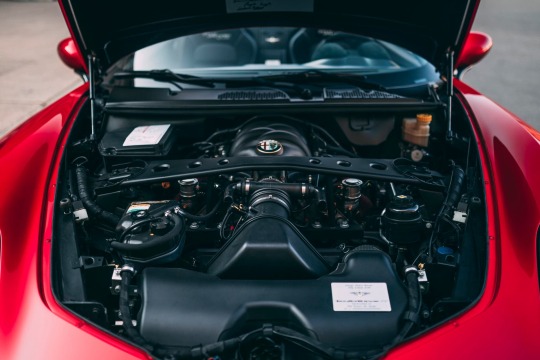
Alfa Romeo Disco Volante by Touring Superleggera
The Disco Volante is a two-seater Gran Turismo. It is based on the Alfa Romeo 8C Competizione coupé with its front-central mounted 4.7 litre V8 engine and a transaxle rear drive with unmodified specifications. Each unit, of which the construction requires 4,000 hours of manual work.The present Disco Volante celebrates the myth of the 1952 style icon. The new design briefing required to blend ingredients as innovation, emotion and aerodynamic properties into a timeless and essential shape.During the development stage, Head of Design Louis de Fabribeckers and his team cooperated with the engineers on an almost daily basis. “We focused on the preservation of the design essence. – says de Fabribeckers – Once the design frozen, we had to understand the manufacturing problems and solve them right away without compromising the design.”In consistency with the car’s design philosophy the interior has a ‘science fiction’ feel to it. Part of this ‘spaceship’ atmosphere was created by elements like the red LED interior light profiles. Also, aeronautics has been the inspiration for parts like the dashboard, instruments and seat adjustment lever.The Alfa Romeo 8C Competizione chassis was chosen for its light and rigid structure and its outstanding dynamic properties. Therefore it forms the perfect basis for the coach-built bodywork of the Disco Volante, integrally conserving the rolling chassis and drive train.The Alfa Romeo 8C’s steel space-frame and other structural elements were retained to guarantee torsion stiffness, high performance and the quality standard. The frame members and the central carbon cell remained unchanged. Elements of the underpinning and the body, such as the engine bay and firewall, the windscreen and cowl, the a-pillar and the locks and hinges have been retained too, just as the dashboard and instruments, the pedals and the steering wheel. Parts like doorframes, the roof frame and the c-pillar have been modified to match with the new shape.The layout of a front-central mounted engine, a transaxle transmission and rear-wheel drive offers an optimal weight distribution of 49-51% between the front and rear axles. To ensure excellent handling the front and rear double-wishbone suspension scheme is combined with hub carriers of forged aluminium and additional trailing arms for the rear suspension.The lightweight and compact 4.7 litre V8 engine delivers 450HP and 480Nm peak torque. It is coupled with a six-speed sequential transaxle gearbox with electronic control and paddle-shift gear selection. Together with a limited-slip differential and a state-of-the-art braking system with large diameter, ventilated discs a precise, dynamic and proactive drive is ensured. The Disco Volante can accelerate from 0 to 100 km/h (0-62 mph) in 4,2 seconds and has a top speed of about 290 km/h (181 mph).
All new and modified components of the Disco Volante have been CAD designed. In this process, which covers feasibility, safety, homologation, aerodynamics and structural analysis, the most advanced IT tools and simulation techniques have been used.
Since torsion stiffness and noise reduction are of critical importance, special attention has been paid to the under-body structure and its elements, like the tubular frames supporting the rear wings and bumper, and the roll bar joining the c-pillars. Other complex design issues were the tailgate hinges, the 3d-cambered door window, and the front wheel covers.
The Disco Volante was then submitted to a CFD aerodynamic study to enhance the airflow and ensure optimal downforce in the rear section. After that, FEM calculations were run to assess resistance and rigidity of all parts subject to homologation.
Touring Superleggera is synonymous with the manufacture of lightweight bodywork. The weight advantage of aluminium is one of the assets of Touring Superleggera’s construction methods. Nowadays however, the craft of hand-beating aluminium panels is combined with the use of carbon fibre reinforced plastic (CFRP). For the Disco Volante, Touring decided to use this combination of aluminium and CFRP. This has been the result of a study conducted to define optimal use of materials for the bodywork in terms of weight, resistance, precision, finish and quality, and ease of repair in case of damage.
The CFRP is used for specific components like the front bumper and grille, the bonnet, the skirts, the boot lid and the integrated rear-window frame. The bonnet and the boot lid are sandwich-built with Nomex filler in-between to obtain a better stiffness/weight ratio and to dampen vibration and noise.
The aluminium panels are hand-beaten using an epoxy mould. Since the inner frames of most parts of the bodywork are made of CFRP, this requires gluing of aluminium on carbon fibre. This technique adds to the rigidity as the glue has structural properties.
The body panels are pre-assembled on a laser measurement platform using a jig. This ensures that the strict tolerance required is respected. After adjustment, the panels are either welded or glued. The body-in-white is then used to preassemble and fit all trim components, brightware and moulding.
160 notes
·
View notes
Note
Hi! People said the upgrades didn't work but an article pointed out there was an improvement in aerodynamic load. I am curious though, Charles mentioned that the car couldn't take on as much kerb as the RB, is this something we can see an improvement on from the upgrades later on? Also, why won't upgrades take on full effect from the get go?
Hello! Very good questions :)
I will start by just saying that the upgrades definitely work, but people and media have hyped them up to the point that people expected total domination.
I will ALSO say that it's impossible to accurately judge an upgrade package after only one race, even more so after less than that. Not even the teams themselves can do that. People have a tendency to jump to conclusions way too quickly.
That is also the reason why the upgrades don't take on full effect immediately: because the team needs a couple of races to fully understand how they work in order to optimise car setup. Some people also refer to Imola not being a very good track for Ferrari, so we might not see the car at its full potential.
RedBull, McLaren and Ferrari are incredibly close at the moment, but they have different strengths and weaknesses so performance between them will likely be very circuit dependent.
It is true that Ferrari definitely has gained an improvement in aerodynamic load. As this graph demonstrates, RedBull has a lot of lateral grip (they are good in the high-speed corners), but are very weak in longitudinal grip (braking). McLaren is the opposite, with good braking but bad cornering. Ferrari has found a nice compromise where they are very good in all areas.
The improvement in aerodynamic load allowed Leclerc to reportedly (I have not seen the data myself) have the highest percentage of full throttle around the lap and the lowest percentage of breaking, as well as the lowest deviation in speed around the lap.

Additionally, we've only seen qualifying and the free practices (which looked very promising), at a track that isn't suited to Ferrari. The qualifying performance of the f1-75 and the sf-23 has also, I think, affected the perception of this car. Compared to them, the sf-24 has much better race pace than qualifying pace. Starting first is great, but starting 3rd and 4th is also good if your race pace is equal to, or better than the cars in p1 and p2.
But looking at the pace difference in qualifying it was very very marginal. Again, Imola is more suited to McLaren than Ferrari and the sf-24 is more of a race car than quali car. The Ferraris didn't manage to get their tyres into the window properly for their last runs, and Verstappen received a slipstream from Hülkenberg that gave him around 0.15 tenths, but this is the closest we've been to pole this season. A great improvement.
The race simulations in practice also showed very good pace. This data (below) was from fp2 (no comparable running in fp3). RedBull was 4th but they probably had their engine turned down a bit more than the others. The consistency can also be a sign of targeted lap times.
This is also slightly misleading, as @/fdataanalysis has chosen to combine Leclerc's and Sainz's times. He should probably have separated them like the McLarens, because Leclerc was on average 1:20.6/7 and Sainz 1:20.8/9. This, and a few very fast laps from Charles, is the reason for the inconsistency in the bar for Ferrari. Piastri was on the hards, so that's not comparable, but both Norris and Leclerc was on mediums at the same time. If the times are representative then on race pace Leclerc was on average -0.1/2 seconds faster. But again, only practice and it's very marginal.
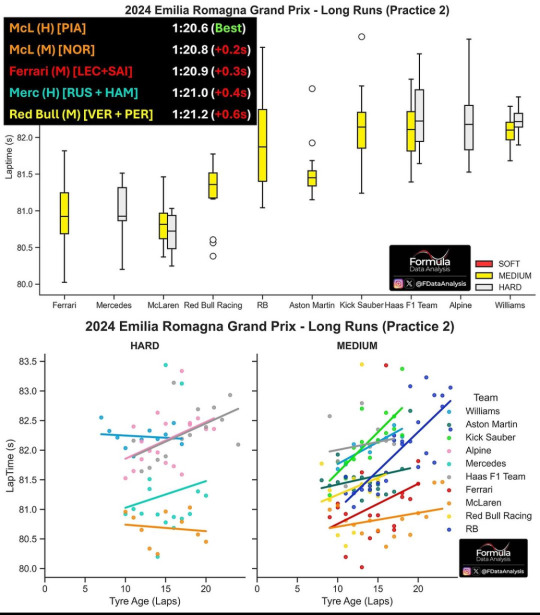
Regarding the sf-24's ability to take kerbs: this is more circuit specific as Imola has some very high kerbs that you need to take in order to maximise the lap. The kerbs haven't been a big issue on other tracks, so I don't see it being a big problem. However, I would need to read up on it a bit and look at more data to say anything with certainty. If it turns out to be an issue I will make a post about it :)
15 notes
·
View notes
Text
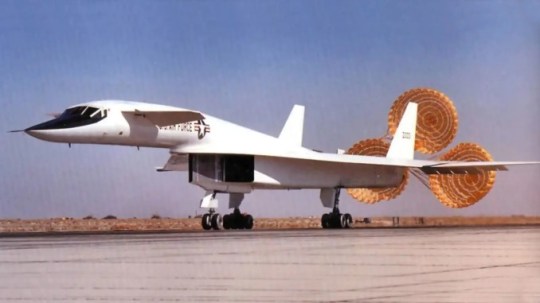
OTD in 1969, The Iconic XB-70 Valkyrie Mach 3 Super Bomber Made Its Last Flight
February 4, 2021 Military Aviation, Military History
Three drag chutes were needed to slow down the landing roll of the XB-70. (Image credit: Reddit edit The Aviationist)
The massive XB-70 Valkyrie is the largest and heaviest airplane ever to fly at Mach 3.
The North American XB-70 Valkyrie was the most ambitious super-bomber project of the Cold War. The massive six-engine bomber was slated to be the ultimate American high-altitude, high-speed, deep-penetration manned nuclear bomber designed to fly high and fast, so as to be safe from Soviet interceptors.
Two Valkyrie prototypes were been built at North American Aviation before the Kennedy Administration cancelled the program as a consequence of the doubts that surrounded the future of manned bombers believed to be obsolete platforms. The threat posed by Soviet SAMs (Surface-to-Air Missiles) put the near-invulnerability of the strategic bomber at high altitudes in doubt. In low-level penetration role, the B-70 offered little performance improvement over the B-52 it was designed to replace (!) and it was much more expensive with shorter range.
Some fascinating variants of the aircraft were proposed. Some envisaged the B-70 carrying an Alert Pod, or flying as a Supersonic Refueler or as a Recoverable Booster Space System (RBSS). You can find all the details about these crazy concepts in this story we have posted last year.
Ezoic
The B-70 program was canceled in 1961 and development continued as part of a research program to study the effects of long-duration high-speed flight with the two XB-70A.
XB-70A number 1 (62-001) made its first flight from Palmdale to Edwards Air Force Base, CA, on Sept. 21, 1964. The second XB-70A (62-207) made its first flight on Jul. 17, 1965. The latter differed from the first prototype for being built with an added 5 degrees of dihedral on the wings as suggested by the NASA Ames Research Center, Moffett Field, CA, wind-tunnel studies.
While the 62-001 made only one flight above Mach 3, because of poor directional stability experienced past Mach 2.5, the second XB-70, achieved Mach 3 for the first time on Jan. 3, 1966 and successfully completed a total of nine Mach 3 flights by June on the same year.

Photo of the XB-70 #1 cockpit, which shows the complexity of this mid-1960s research aircraft. On the left and right sides of the picture are the pilot’s and co-pilot’s control yokes. Forward of these, on the cockpit floor, are the rudder pedals with the NAA North American Aviation trademark. Between them is the center console. Visible are the six throttles for the XB-70’s jet engines. Above this is the center instrument panel. The bottom panel has the wing tip fold, landing gear, and flap controls, as well as the hydraulic pressure gages. In the center are three rows of engine gages. The top row are tachometers, the second are exhaust temperature gages, and the bottom row are exhaust nozzle position indicators. Above these are the engine fire and engine brake switches. The instrument panels for the pilot left and co-pilot right differ somewhat. Both crewmen have an airspeed/Mach indicator, and altitude/vertical velocity indicator, an artificial horizon, and a heading indicator/compass directly in front of them. The pilot’s flight instruments, from top to bottom, are total heat gage and crew warning lights; stand-by flight instruments side-slip, artificial horizon, and altitude; the engine vibration indicators; cabin altitude, ammonia, and water quantity gages, the electronic compartment air temperature gage, and the liquid oxygen quantity gage. At the bottom are the switches for the flight displays and environmental controls. On the co-pilot’s panel, the top three rows are for the engine inlet controls. Below this is the fuel tank sequence indicator, which shows the amount of fuel in each tank. The bottom row consists of the fuel pump switches, which were used to shift fuel to maintain the proper center of gravity. Just to the right are the indicators for the total fuel top and the individual tanks bottom. Visible on the right edge of the photo are the refueling valves, while above these are switches for the flight data recording instruments. (Image credit: NASA)
A joint agreement signed between NASA and the Air Force planned to use the second XB-70A prototype for high-speed research flights in support of the American supersonic transport (SST) program.
However, on June 8, 1966, the XB-70 62-207 was involved in one of the most famous and tragic accidents in military aviation when it collided with a civilian registered F-104N while flying in formation as part of a General Electric company publicity photo shoot over Barstow, California, outside the Edwards Air Force Base test range in the Mojave Desert. The aircraft were flying in formation with a T-38 Talon, an F-4B Phantom II, and a YF-5A Freedom Fighter.

North American XB-70A Valkyrie just after collision. Note the F-104 is at the forward edge of the fireball and most of both XB-70A vertical stabilizers are gone. (U.S. Air Force photo)
As explained in a previous post here at The Aviationist:
Towards the end of the photo shooting NASA registered F-104N Starfighter, piloted by famous test pilot Joe Walker, got too close to the right wing of the XB-70, collided, sheared off the twin vertical stabilizers of the big XB-70 and exploded as it cartwheeled behind the Valkyrie. North American test pilot Al White ejected from the XB-70 in his escape capsule, but received serious injuries in the process. Co-pilot Maj. Carl Cross, who was making his first flight in the XB-70, was unable to eject and died in the crash.
The root cause of the incident was found to be wake turbulence: wake vortices spinning off the XB-70’s wingtip caused Walker’s F-104N to roll, colliding with the right wingtip of the huge XB-70 and breaking apart. As explained in details in this post, wingtip vortices form because of the difference in pressure between the upper and lower surfaces of a wing. When the air leaves the trailing edge of the wing, the air stream from the upper surface is inclined to that from the lower surface, and helical paths, or vortices, result. The vortex is strongest at the tips and decreasing rapidly to zero nearing midspan: at a short distance from the trailing edge downstream, the vortices roll up and combine into two distinct cylindrical vortices that constitute the “tip vortices.
Although research activities continued with the first prototype with a first NASA flight on April 25, 1967, the last one was on Feb. 4, 1969.
The only remaining XB-70 Valkyrie super bomber in on display at the National Museum of the U.S. Air Force at Wright-Patterson AFB in Dayton, Ohio. In October last year, it had to briefly moved outside for display maintenance. Here you can watch a video of the monumental move.
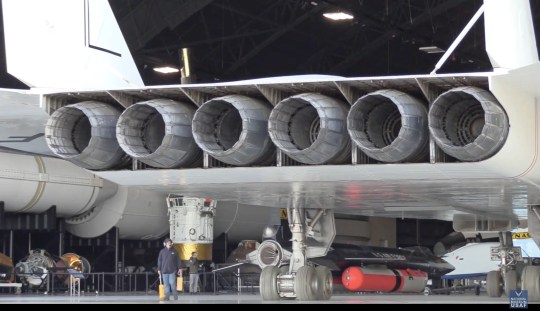
A view of the six massive afterburners on the XB-70 Valkyrie as the aircraft is towed out of its display hangar temporarily for museum maintenance. (Photo: National Museum of the U.S. Air Force via YouTube)
About David Cenciotti
David Cenciotti is a journalist based in Rome, Italy. He is the Founder and Editor of “The Aviationist”, one of the world’s most famous and read military aviation blogs. Since 1996, he has written for major worldwide magazines, including Air Forces Monthly, Combat Aircraft, and many others, covering aviation, defense, war, industry, intelligence, crime and cyberwar. He has reported from the U.S., Europe, Australia and Syria, and flown several combat planes with different air forces. He is a former 2nd Lt. of the Italian Air Force, a private pilot and a graduate in Computer Engineering. He has written five books and contributed to many more ones.
@TheAviationist via X
21 notes
·
View notes
Text

Mercedes-AMG SL „An Icon Reborn“.
Affalterbach. Mercedes-AMG SL, the new edition of an icon, returns to its roots with a classic soft top and sporty character. At the same time, the luxurious roadster as a 2+2 seater is particularly suitable for everyday use and puts its power down on the road with all-wheel drive for the first time.
High-tech components such as the AMG ACTIVE RIDE CONTROL suspension with active anti-roll stabilisation, rear-axle steering, the optionally available AMG ceramic high-performance composite brake system and the standard-fit DIGITAL LIGHT with projection function sharpen the sporty profile.
In combination with the AMG 4.0-litre V8 biturbo engine, this results in a driving experience of the highest order. As a consistent Performance Luxury model, Mercedes-AMG in Affalterbach has developed the SL completely independently. Two models with AMG V8 engines will kick off the market launch.
At market launch, the new SL starts with two output levels of the AMG 4.0-litre V8 biturbo engine. The engines are assembled purely by hand at the company's site in Affalterbach according to the "One Man, One Engine" principle. In the top model SL 63 4MATIC+ (combined fuel consumption 12.7-11.8 l/100 km, combined CO2 emissions 288-268 g/km)[1] the engine develops 430 kW (585 hp) and provides a maximum torque of 800 Nm over a wide rev range from 2500 to 4500 rpm.
Accelerating from 0 to 100 km/h takes only 3.6 seconds, the top speed is 315 km/h. In the SL 55 4MATIC+ (combined fuel consumption 12.7-11.8 l/100 km, combined CO2 emissions 288-268 g/km), the V8 unit develops an output of 350 kW (476 hp) and a peak torque of 700 Nm. The sprint from standstill to 100 km/h takes 3.9 seconds, the top speed is 295 km/h.
Mercedes-AMG One man, one engine Handcrafted by Michael Kübler @f1mike28 in Germany Affalterbach.
Driving Performance is my Passion! Mercedes-AMG the Performance and Sports Car Brand from Mercedes-Benz and Exclusive Partner for Pagani Automobili. Mercedes-AMG Handcrafted by Racers.
8 notes
·
View notes
Text
Porsche Panamera
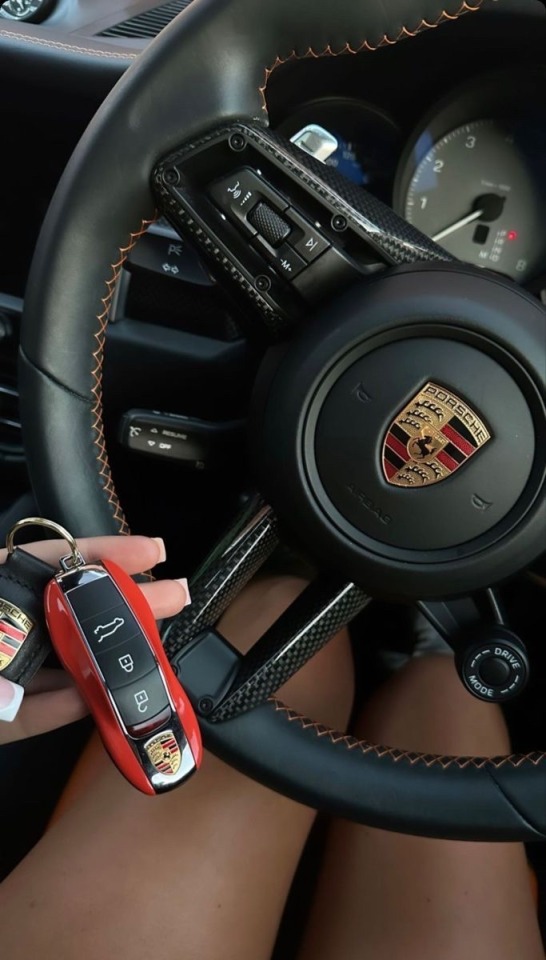


The presentation of the first generation (code name 970), which took place in April 2009 in China, revealed only part of the model range (3 versions), later expanded to 9 (including a diesel and a hybrid). Furthermore, there is a version with a 15cm longer wheelbase, called Executive.
In April 2013, a restyling was presented which, in addition to modifications to the headlights and bumpers, introduced some new engine features.
The 400 HP 4.8 V8 was replaced by the more powerful and high-performance 420 HP 3.0 V6 biturbo for the S version.
Car body
edit
The Panamera is a 4-door coupé approximately 5 meters long, with top speeds ranging between 259 km/h for the Diesel version and 310 km/h for the Turbo S version. The four seats consist of single seats; the external style deliberately recalls that of the Porsche 911, especially at the front, so as to make the Panamera immediately recognizable as a Porsche.
Production takes place in the Leipzig plant, the same one where the Porsche Cayenne is assembled, demonstrating the presence of many points in common between the two models (starting from the engines and the integral transmission on the 4S and Turbo models).
The markets for which the model is intended are, in addition to Europe and the USA, above all the emerging markets (Russia, China, Middle East): for this reason the presentation took place at the Chinese show in Shanghai.
In April 2013, the restyled version of the Panamera was announced, which then made its debut at the Shanghai Auto Show. The plug-in hybrid version, called Panamera S E-Hybrid, was introduced on the US market in November 2013.
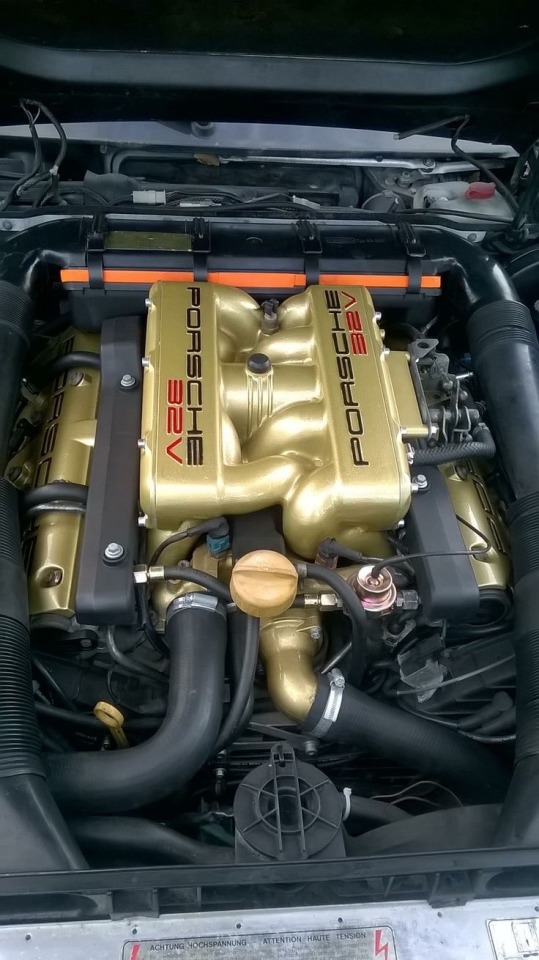
The second generation Panamera was unveiled on 28 June 2016 at an event held in Berlin. The code name is Type 971; the car, built on the VW Group's new Porsche MSB (Modular Standard Drive) platform, is 35 millimeters longer and 5 mm wider than the first generation, with 30 millimeters more wheelbase. The interior features a redesigned dashboard, with center console instrumentation made up of touch-sensitive surfaces replacing the previous generation with physical buttons. The tachometer, the only analogue instrument, is mounted centrally on the instrument panel and recalls that of the 1955 Porsche 356 A. The new car is equipped with two seven-inch displays instead of the classic pointer dials in the dashboard, with another screen 12.3-inch touchscreen that also acts as a satellite navigator with Apple CarPlay integration present in the center console. The new instrumentation is called Advanced Cockpit. Under the bonnet is a new range of engines, with only the Panamera 4S, 4S Diesel and Turbo versions available at launch.
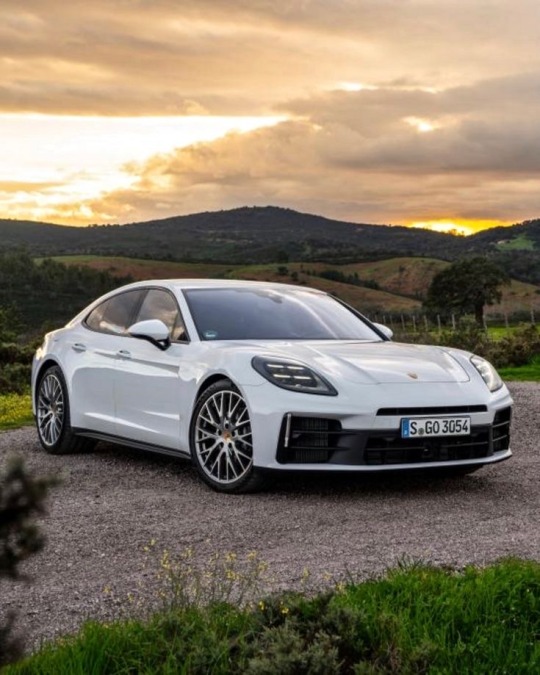
In March 2017 Porsche presented the Panamera Turbo S E-Hybrid, a plug-in hybrid car. The Turbo S E-Hybrid features the 4.0-liter V8 engine from the Panamera Turbo, but it comes paired with an electric motor. The total system output is 680 hp, making it the second most powerful production Porsche ever built, after the 918 Spyder.
In this new model the torque of the overall system rises to 850 Nm, reaching the torque level of the Diesel version. Performance also increases, 0-100 is covered in 3.4 and 0-200 in 8.2 seconds.
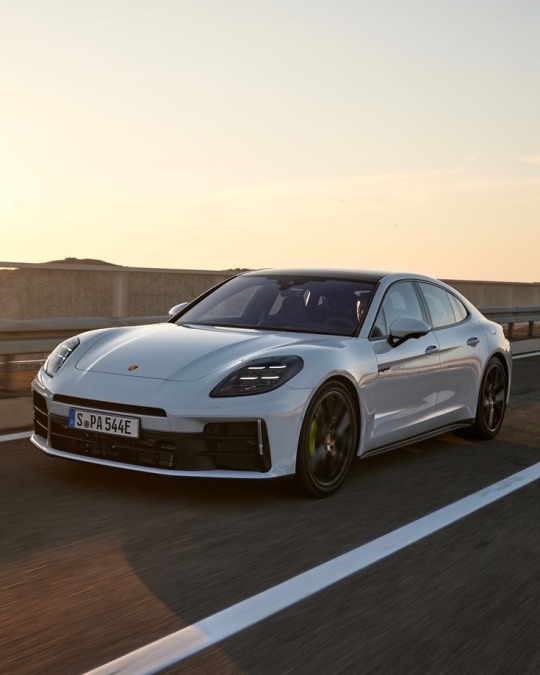
The new Panamera aesthetically no longer features the rounded tailgate that had divided automotive critics of the previous series, but now the tail with a more tapered and squared style recalls that of the 991 through the headlights and the longitudinal rear LED strip. This improvement in design helped clarify the model's identity as a touring-oriented sports car.
In March 2017 at the Geneva Motor Show, a shooting brake version of the Panamera II series built on the same base, called Panamera Sport Turismo, was presented.
The restyling of the second generation Panamera was presented on August 26, 2020.
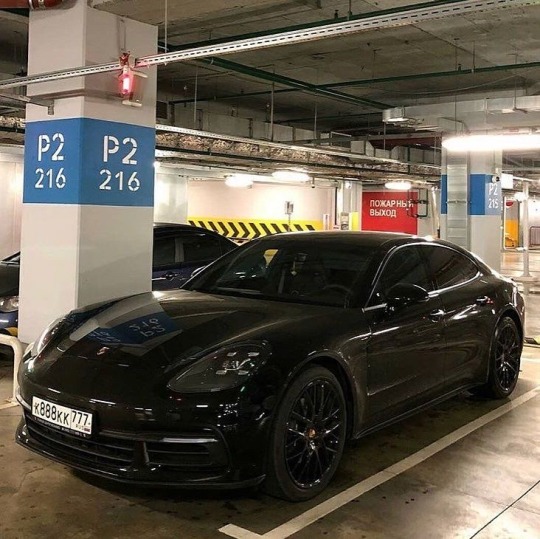
8 notes
·
View notes
Text
Space Shuttle: Forward Fuselage

"Crew Module
The 65.8-cubic-meter (2,325-cubic-foot) crew station module is a three-section pressurized working, living and stowage compartment in the forward portion of the Orbiter. It consists of the flight deck, the middeck/equipment bay and an airlock. Outside the aft bulkhead of the crew module in the payload bay, a docking module and a transfer tunnel with an adapter can be fitted to allow crew and equipment transfer for docking, Spacelab and extravehicular operations.

The two-level crew module has a forward flight deck with the commander's seat positioned on the left and the pilot's seat on the right."
Flight Deck

The flight deck is designed in the usual pilot/copilot arrangement, which permits the vehicle to be piloted from either seat and permits one-man emergency return. Each seat has manual flight controls, including rotation and translation hand controllers, rudder pedals and speed-brake controllers. The flight deck seats four. The on-orbit displays and controls are at the aft end of the flight deck/crew compartment. The displays and controls on the left are for operating the Orbiter, and those on the right are for operating and handling the payloads. More than 2,020 separate displays and controls are located on the flight deck.

Six pressure windshields, two overhead windows and two rear-viewing payload bay windows are located in the upper flight deck of the crew module, and a window is located in the crew entrance/exit hatch located in the midsection, or deck, of the crew module.

Middeck

The middeck contains provisions and stowage facilities for four crew sleep stations. Stowage for the lithium hydroxide canisters and other gear, the waste management system, the personal hygiene station and the work/dining table is also provided in the middeck.

The nominal maximum crew size is seven. The middeck can be reconfigured by adding three rescue seats in place of the modular stowage and sleeping provisions. The seating capacity will then accommodate the rescue flight crew of three and a maximum rescued crew of seven.
Airlock

"The airlock provides access for spacewalks, known as extravehicular activity, or EVA. It can be located in one of several places: inside the Orbiter crew module in the middeck area mounted to the aft bulkhead, outside the cabin also mounted to the bulkhead or on top of a tunnel adapter that can connect the pressurized Spacehab module with the Orbiter cabin. A docking module can also serve as an EVA airlock.
The airlock contains two spacesuits, expendables for two six-hour payload EVAs and one contingency or emergency EVA, and mobility aids such as handrails to enable the crew to perform a variety of tasks. The airlock allows two crewmen room for changing spacesuits."


"The forward reaction-control-system module is detachable for servicing, and its removal enables access to the lower nose section and upper landing gear bay."
source, source, source, source
NASA ID: link
39 notes
·
View notes
Text

The FIA Formula 2 Championship has unveiled the F2 2024 car to the international media in the Formula 1 paddock in Monza today, Thursday 31st August.
The design philosophy of the new car, which will be raced in the 2024, 2025 and 2026 seasons, is to give young drivers who aspire to race in Formula 1 the best preparation, by making it as close to an F1 car as possible in terms of safety, look, systems, performance, sustainability and accessibility, all at reasonable costs. Moreover, the nose, front and rear wings and floor have been designed to encourage wheel-to-wheel racing, which will lead to thrilling on-track action.
The new car, which features the latest FIA safety innovations, is powered by a 3.4 litre turbo-charged Mecachrome engine, and includes some new features to accommodate the Aramco synthetic sustainable fuel that will be introduced in 2025. For 2024, the F2 car will continue to run on Aramco 55% bio-sourced sustainable fuel, which was successfully introduced in 2023.
The F2 2024 has also been designed to comply with the FIA 2024 specifications in terms of braking, steering effort and ergonomics to accommodate a wide range of drivers and make the championship as accessible as possible.
The car systems will still include marshalling such as Virtual Safety Car (VSC), and optimised Drag Reduction System (DRS), whilst the electronics have been enhanced with a new Marelli Vehicle Control Unit (VCU).
The car completed a successful shakedown in July in Varano, with former F2 driver Tatiana Calderon at the wheel. Following today’s unveiling, the development programme will continue over a number of tests across the remainder of the year, with several drivers including 2022 FIA Formula 2 Champion Felipe Drugovich.
The programme will comprise sufficient mileage to ensure reliability before the cars are delivered to the teams, and further development will be done throughout 2024, 2025 and 2026, as the sustainable component of the fuel increases to reach the target of 100% of synthetic sustainable fuels in 2027.
One car will be delivered to the teams before the end of December 2023, and the second car will be delivered in mid-January 2024. There will be a shakedown with the teams before the first official pre-season test, with one car per team.
Stefano Domenicali, President and CEO of Formula 1, said: “F2 consistently delivers excellent racing and acts as an important training ground for future members of the Formula 1 grid, and by bringing the design philosophies of the two cars closer together we will support this development further. The new F2 car is also an important symbol for our sustainability journey as the series continues to pioneer advanced sustainable fuel which will become a part of F1 from 2026. I want to pay tribute to Bruno and his team as well as the FIA for our continued strong collaboration in this category. I can’t wait to see the car on track next season.”
FIA Deputy President for Sport, Robert Reid, said: “The launch of this next generation of FIA Formula 2 car marks the start of an exciting new chapter for the championship. A huge amount of work has been done by the FIA, Formula 2 and its partners to put together what is a truly impressive package focused on close racing, the latest safety technologies, even greater environmental sustainability and better accessibility for drivers than ever before. This significant step will bring Formula 2 closer to the pinnacle of motor sport, ensuring that the next generation of drivers get the best possible preparation for the future and also put on a fantastic show for the fans around the world.
“Seeing how design philosophies and technologies are cascading down from Formula 1 to the junior categories is a great testament to the FIA single-seater pathway that guides young talents from around the world towards a successful career in top-flight competition, and we are all looking forward to seeing this car in racing action next season.”
FIA Formula 2 Championship CEO, Bruno Michel, said: “I’m very proud to present our new F2 car, which will race for the next three years. Together with the FIA, we’ve designed a powerful, challenging and safe car that will prepare young drivers for F1, and that will continue to provide great racing and a lot of overtaking opportunities, something that the fans expect from F2.
“It has been designed also to fit all types of drivers, taking into account FIA’s consideration regarding the steering effort. This is obviously key to making our sport more inclusive, by enhancing our car’s driveability and comfort.
“One of our main focuses remains costs control. So, we have kept the same engine and gearbox, and there are a lot of carried-over parts from the previous car. Finally, we made sure that the teams can manage this new car with 12 operational people, as per the Sporting Regulations.
“I want to thank our partners Aramco, Pirelli, Dallara and Mecachrome, who are key in making this car safe, reliable and the best racing machine to prepare our drivers for Formula 1.”
The 2024 FIA Formula 2 car – Details
Dimensions
- Overall length: 5284 mm
- Overall width: 1900 mm
- Overall height: 1097 mm (including FOM roll hoop camera)
- Wheelbase: 3135 mm
Engine
- V6 - 3.4 litre single turbo charged Mecachrome engine.
- Rated to 620 HP @ 8750 rpm.
- Fly by wire accelerator system.
- Rebuild after 8000 km.
- Maximum Torque 570 Nm @ 6000 rpm.
Monocoque and Bodywork
- Survival cell - Sandwich Carbon/aluminium honeycomb structure/Zylon anti-intrusion panels made by Dallara.
- Front and rear wing - Carbon structures made by Dallara.
- Bodywork - Carbon - Kevlar honeycomb structures made by Dallara.
Safety standards
- Full FIA F1 2024 safety standards.
- Titanium Halo F1 specification.
Gearbox
- 6-speed longitudinal Hewland sequential gearbox.
- Electro-hydraulic command via paddle shift from steering wheel.
- ZF SACHS Carbon clutch.
- No on-board starter.
- Non hydraulic ramp differential.
Steering system
- Non-assisted rack and pinion steering system - FIA 2024 specification.
- New XAP steering wheel with dashboard, gear change, clutch and DRS paddles, marshalling & VSC display.
Electronic features
- New Marelli Marvel VCU 480 ECU/GCU including data logging system.
- New Marelli FOX 442 power supply management unit.
- CAN data acquisition pre-equipment.
- Beacon receiver.
- F1 type VSC & Marshalling system.
Suspension
- Double steel wishbones, pushrod operated, twin dampers and torsion bars suspension (Front) and spring suspension (Rear).
- Adjustable ride height, camber and toe.
- Two way (F) / Four way (R) adjustable Koni dampers.
- Adjustable anti-roll bar (Front/Rear).
Wheels and tyres
- O.Z. Racing magnesium rims.
- 18” x 12” front wheel dimension.
- 18” x 13.7” rear wheel dimension.
- F2 specific Pirelli slick / wet tyres.
- TPMS Texense (Tyre Pressure Monitoring System).
Brakes
- 6 pistons monobloc Brembo callipers.
- Carbone Industrie carbon-carbon brake discs and pads.
Fuel
- Aramco 55% bio-sourced sustainable fuel for 2024.
- ATL FT5 fuel cell 125 litres – FIA standard.
DRS
- Same functionality of DRS used in Formula 1.
- Hydraulic activation.
Extinguisher system
- New FEV system (electrically operated), in accordance to the latest FIA standards.
(x)
12 notes
·
View notes
Text

Ferrari unveiled the '296 Challenge' at the Finali Mondiali race at Mugello Circuit. The car is scheduled to debut in the Ferrari Challenge in the 2024 season and is the ninth model in the history of the single-make championship hosted by Ferrari. The Ferrari Challenge is currently in its 32nd season.

As riders around the world became more skilled and competitive, the 296 Challenge attempted to make bigger changes than the original model. The 296 Challenge continues Ferrari's long tradition of developing cars for gentleman drivers, but draws on the expertise accumulated in the '296 GT3' more than any other model. The 296 Challenge is a vehicle for drivers who are passionate about future GT racing. During the development of the 296 Challenge we made significant changes, not just minor changes to the model of the production car, but to make it a vehicle optimized for track driving. An extreme form of the vehicle was developed that improves overall performance while maintaining consistency and repeatability for testing and competition.
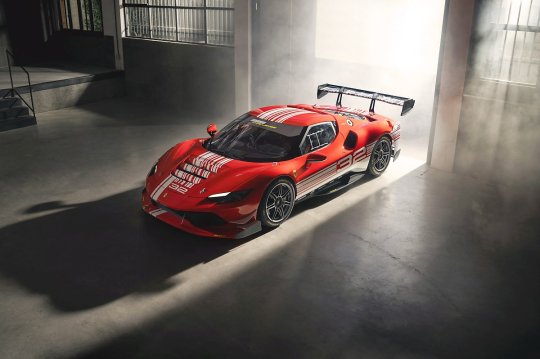
The 296 Challenge is the first car in Ferrari's single-brand range to be equipped with a V6 engine. So far, all models participating in the Challenge have been equipped with V8 engines. The biggest change compared to the 296 GTB is the elimination of the hybrid powertrain like the 296 GT3. As a result, while reducing the weight of the vehicle, the power output was increased to 700 horsepower (cv), setting a new record in this segment with an output of 234 horsepower per liter. In terms of aerodynamics, solutions derived from the 296 GT3 were taken and pushed to the extreme to achieve unprecedented downforce figures. These include the "S-shaped duct" (which draws air into the central radiator and exhausts it through the vents on the bonnet), the "swan-neck rear wing layout (another element inspired by the development of the 296 GT3)", and the A device that maximizes the stability of downforce generated in different trim conditions.

The braking system has also been completely redesigned. It's the first to feature the new "CCM-R PLUS" disc, which features technology derived from extreme track applications. New Pirelli tires developed specifically for the 296 Challenge also contributed significantly to improved performance. After its debut at the "2019 Finali Mondiali", the 296 Challenge set a record at the Mugello circuit approximately 2 seconds faster than its predecessor "488 Challenge Evo" which debuted in the 2020 season. From the early stages of development, the 296 Challenge discussed removing all hybrid components from the V6 powertrain, as in the 296 GT3. The electric motor and high-voltage battery have been eliminated, and the output of the twin-turbo V6 engine has been increased to 700 cv. This approach helps limit vehicle weight and overall unit complexity, which are fundamental factors in track driving.
Ferrari unveils '296 Challenge' race car with F1 technology
#cars#ferrari#ferrari f1#formula 1#scuderia ferrari#formula one drivers#formula one#296 Challenge#car
8 notes
·
View notes
Video
undefined
tumblr
lewis hamilton, p2, during the post-race press conference, australia - april 2, 2023
(transcription under the cut)
Interviewer: "Lewis, coming to you now. You seemed elated after that one. Just how unexpected was this result?"
Lewis: "Oh, it was very unexpected. Just coming into the weekend, but obviously getting a second and a third in qualifying really blew us all away, and a huge boost of energy throughout the team. So that meant today we had a shot at trying to at least overtake Max for a second, and so we both got ahead, which was amazing, to have a Mercedes one-two for a second, and obviously he came sailing by at one stage.
But a really entertaining race, and had a really good battle with Fernando, which was awesome."
Interviewer: "First of all, can we touch on that overtaking move with Max. Just talk us through the run down to turn three."
Lewis: "I thought it was pretty decent. I mean, he braked early and I braked late, and I was fully up the inside and I think we both left space for each other. I didn't run him off the road and he didn't turn in on me, so we didn't touch and that's racing."
Interviewer: "Alright. You touched on that battle with Fernando. It was real cat-and-mouse all afternoon between the two of you. Who do you feel had the faster car this afternoon: you or him?"
Lewis: "Out of who?"
Interviewer: "You and Fernando."
Lewis: "I think Fernando was a little bit quicker this afternoon. I mean, he was in my tow, so I think we were probably slightly quicker on the straight and he was quicker through all the corners, so I think we definitely have some performance to find.
It definitely wasn't easy, keeping him at bay and keeping him out of the DRS zone. But it was really quite interesting, just to see where we were lacking and where we were good, and so there's lots of positives to take from today. But we do, naturally, need to add on some performance. I mean, they've been ahead the last two races, so... But for us to somehow still finish ahead is pretty awesome, so I'll definitely take it."
Interviewer: "Alright, many congratulations..."
[time jump]
Journalist: "Alex Kalinauckas, Autosport. Question to Lewis and to Fernando, please. You changed tires after the very first red flag and it looked like you were going to go to the end without stopping. How difficult was it, balancing keeping those tires alive whilst also chasing each other, and it looking like the pressure was on? Thanks."
Interviewer: "Lewis, please, start with you."
Lewis: "Yeah, I think I had a lot more tire than I thought that I did, at the end. There was a moment where I thought that the tire was opening up, and Fernando was applying pressure, then backing off, and I had decent pace, and then closing the gap again, and he kept...
He had two or three charges, which I had to then really up the ante and try to match him, which was tough. I was able to be around a tenth or so off him, or sometimes ahead, but, with 18 laps to go, I was thinking, 'Jeez, I don't know how these tires are going to go all the way.'
But then he had a moment where he backed off, and then I was able to save a bit and then got into a good rhythm, and I was able just to keep that gap exactly the same for those last ten laps or whatever. So I was just counting it down, just hoping that it would just stick with it... But yeah, he was very, very consistent, from what I could tell. Didn't make any mistakes. Fernando doesn't make a lot of mistakes, so it needed to be a good job."
[time jump]
Journalist: "Fred Ferret, L'Equipe. Question to Lewis and Fernando. When you go into a restart, on a race like that, do you fear losing position, or are you happy to try to be the first at the first corner?"
Lewis: "I mean, I was always trying to get to first, even when I was third, and then obviously up alongside Max at the end, I really was hoping for a better start than I got. We both got pretty much similar getaways, and then he had a better second phase.
And then it's just not to lose out to Fernando. He's having good starts as well. So it's all very, very close, and all within a meter or so by the time you get to turn one, so... Initially it was trying to get ahead, and then otherwise it was just, at the end, not wanting to lose a position to the Aston."
#lewis hamilton#f1#formula 1#australian gp 2023#fic ref#fic ref 2023#australia#australia 2023#australia 2023 sunday#tw max
20 notes
·
View notes
Note
Do you think it is usually a pattern for Charles' performance level to increase as the season goes on?
From: https://www.theguardian.com/sport/2023/jul/08/formula-one-charles-leclerc-interview-ferrari-british-grand-prix
“My mentality has always been to push at the maximum and not leave anything on the table,” he says.
“When you have a trickier car to drive, as is the case for the first part of this season, mistakes happen. I know this. Whenever there is something missing I am trying to find something that is not there, I will always try to push the limit.”
I think this also checks with the whole "Carlos is outperforming Charles" narrative, it will probably only last for a few races in the beginning since Charles seems to... I don't know how to word it so please correct me, but he really digs (?) into the car at the beginning, trying to find its limits, might make an error- The point is, he seems more comfortable taking risks when dealing with a new car. Once he finds his footing and is fully comfortable with the car though, he will probably outperform Carlos.
I wasn't here in the first part of the 2023 season and I don't know much about his performances in past seasons, so please correct me if I'm wrong <3
So the general rule is that over the course of a season any driver is expected to get better in their car. This is for two reasons 1. they have more practice getting to know the car and optimal settings and 2. upgrades do improve the car so the maximum possible at the beginning of the season is very different than the maximum at the end. So to answer the first part of your question yes, but not just for Charles for every driver(at least that's what we hope to see for them)
Now the issue that can come up sometimes in Ferrari's case is that there have been times when the car wasn't developed in the right direction, or at least developed without taking Charles' driving style into account, this would result in worse results as a season progresses. Like in 2023 we saw Charles make massive improvements in results once they upgrades the floor and got the car into a manageable window for him.
2023 the car was so finicky at the beginning of the season they had to use more understeer to compensate(Really not good to have to do that to manage an issue with the car) obviously this affect Charles more than Carlos at the beginning of the season.
The reason we see this kind of inverse relationship between Charles' and Carlos'. They have opposite driving styles. Charles prefers pretty severe oversteer, and Carlos prefers understeer. This is why when we see the car do well for one it might not be great for the other. I think this difference was an issue for Ferrari under Binotto because they tried (and failed) to make a car that both could do well in, but with such different driving styles that was going to be impossible.
A reason you would see a driver do worse over a season is likely that the team did not develop upgrades in the right direction. There are other reasons but if there is a decline that is consistent and out of place compared to what they have been doing then that is a likely cause.
Right now I think that we've seen Carlos get more out of the SF-24 (during some qualifying and races) is because with the current base he is harder on tyres overall so he has been in a better window with his driving style as far as the tyre heating than Charles. Ferrari are going to sacrifice tyre deg for speed in coming upgrades so we would expect to see Charles start performing better and Carlos to maybe lose a little as far as tyres go.
I fully believe that Charles has been pushing, trying to get the max doesn't always mean you hit it perfectly. He absolutely got everything from that car in Suzuka, and also Bahrain(insane to pull of P4 with the brakes in the condition that they were) Also in China he was fighting for those positions(I will explain why we didn't see better placement in my analysis)
Hopefully that answers your question!
14 notes
·
View notes
Photo
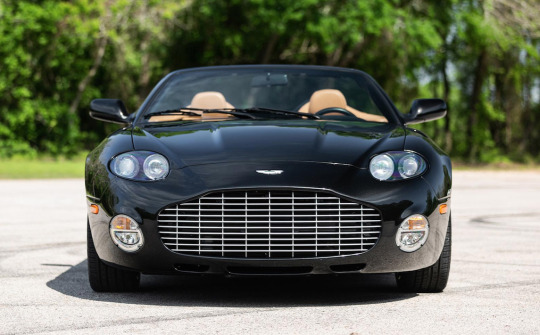
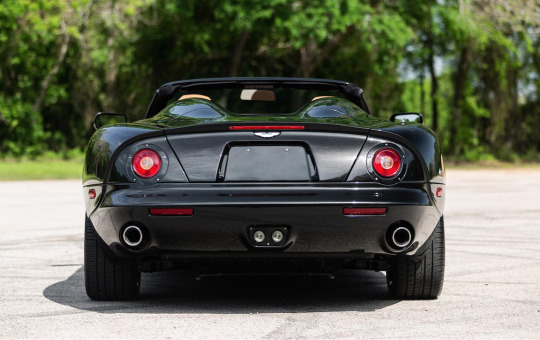

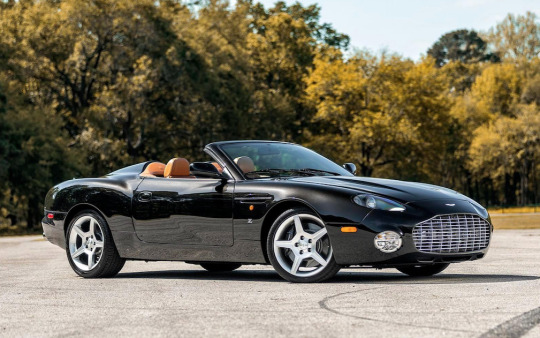
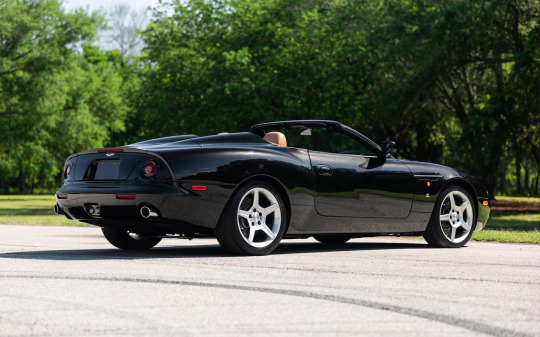
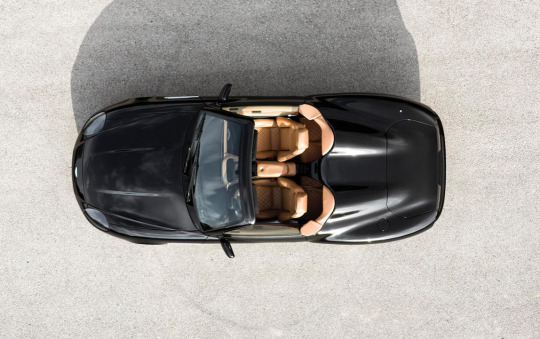

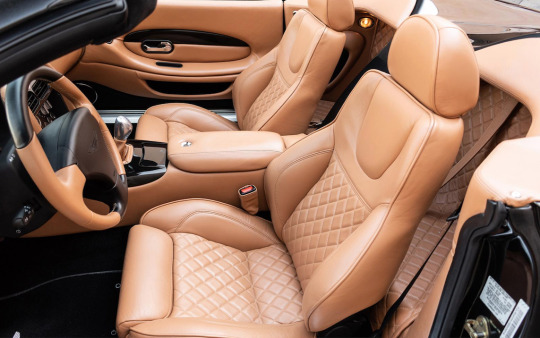

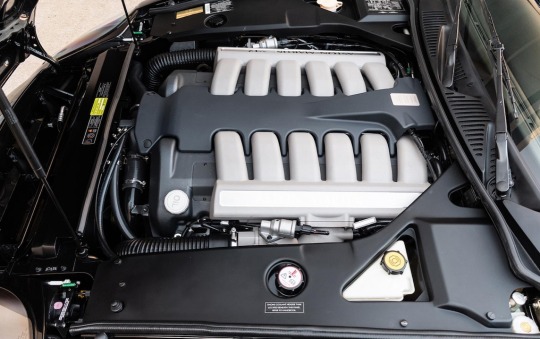
Aston Martin DB AR1 Zagato (76 of 99)
The fabled Italian coachbuilder Zagato is responsible for styling some of the most iconic sports cars in history, and the 2003 collaboration between scion Andrea Zagato and Aston Martin’s chief designer Henrik Fisker produced a striking, limited-production grand touring roadster with elegant refinements and a top speed in excess of 185 mph.Hand built in England, the DB AR1 – or American Roadster 1 – had a production run of just 99 cars that quickly pre-sold after a reveal at the Los Angeles Auto Show. Featuring a svelte profile, stunning diamond-stitched leather interior, and special Zagato-designed five-spoke alloy wheels, the AR1 looked every bit the part as a bespoke, coachbuilt Italian exotic.Mechanically, the DB AR1 used a tuned version of Aston Martin’s six-litre V-12 engine producing 435 hp, an increase of 15 hp over the Vantage. Equipped with a six-speed manual gearbox with an AP Racing twin-plate clutch, and an active sport exhaust, the AR1 enjoyed a noticeable jump in mid-range power and torque. Acceleration was impressive, with the roadster sprinting from 0–60 mph in 4.9 seconds.Braking was improved as well, with the addition of multi-piston Brembo disc brakes using PAGID Racing RS front pads to provide sustained performance and reduced fade at high speeds. An uprated Vanquish brake booster assured a firm and consistent pedal feel.The DB AR1 offered here, numbered 76 of 99, is a particularly handsome example. Finished in special-order Ferrari Nero Daytona (Daytona Black) over light tan leather, the scheme is emblematic of the Savile Row sophistication synonymous with Aston Martin. Factory options include a satellite navigation system, embroidered floor mats, power-fold mirrors, black brake calipers, roadster wheels, fire extinguisher, and aluminum shift knob and switches. A factory Becker six-CD-changer stereo adds to the period creature comforts.
72 notes
·
View notes
Note
i wish i could be a fly on the wall of lewis working on his quali form. he knows he has to improve but i’m so curious what that actually means in practice? how do you work on it?
Ahhh it's a difficult question. It's really about putting together the perfect lap, so you need consistency, a good line, no mistakes, ... That's usually something they try to get together during FPs and experience helps a lot because knowing the track, it becomes muscle memory to some extent. But as usual the car is part of the equation. From what I saw he locked up a couple of times and that's both down to not braking too hard (driver skill) and the car being able to handle the corner (car performance). If you're used to the track and what you need to do to get around it but the car can't follow you there it takes adjustments on both parts to make it work on some kind of middle ground. He might still be pushing too hard and overdriving the car past what it can take, I don't know. Maybe he's too eager.
2 notes
·
View notes
Photo

New Post has been published on https://www.vividracing.com/blog/slotted-vs-drilled-vs-standard-brake-rotors-in-60-seconds/
Slotted vs Drilled vs Standard Brake Rotors in 60 Seconds

youtube
Rotors, also known as brake discs, are part of the braking system. Rotors work with the brake pads to slow down or stop the vehicle when the brakes are applied. When the brake pedal is pressed, the brake pads squeeze the rotors, creating friction and causing the vehicle to decelerate. There are different types of rotors including drilled and slotted rotors. Drilled and slotted rotors offer distinct advantages and considerations compared to standard rotors, especially in demanding driving conditions. Let’s dive deeper into their characteristics:
Drilled and Slotted Rotors:
1. Improved Heat Dissipation: Slotted and drilled rotors are designed to dissipate heat more efficiently. The slots or holes on the rotor surface aid in venting heat generated during heavy braking. This helps prevent brake fade, ensuring consistent braking performance even under intense driving conditions.
2. Better Brake Performance: These rotors offer enhanced initial bite and can improve braking responsiveness. Their design allows for better gas and dust dispersion, reducing the risk of brake glazing and maintaining a cleaner surface for the brake pads to engage.
3. Aesthetic Appeal: Beyond performance, drilled and slotted rotors often lend a sportier appearance to a vehicle. This aesthetic factor can be appealing to car enthusiasts seeking a more aggressive look for their vehicles.
Things to Consider Before Buying Drilled and Slotted Rotors
1. Accelerated Wear: Due to their design, drilled and slotted rotors can wear out faster compared to standard rotors. The slots or holes can accelerate pad wear over time, especially in aggressive driving or under heavy braking conditions.
2. Potential for Cracks: There’s a possibility of cracking at the drilled holes due to stress concentrations, particularly in racing or severe driving situations. While this occurrence is rare, it’s a known risk.
Click Here to Purchase the Best Rotors for Your Car Now
Standard Rotors:
1. Longevity: Standard rotors are more durable and tend to have a longer lifespan compared to drilled and slotted ones. They are well-suited for everyday driving conditions and are less prone to premature wear or cracking.
2. Consistency in Performance: While standard rotors might not offer the enhanced heat dissipation or initial bite of drilled and slotted rotors, they provide consistent and reliable braking performance for regular driving.
Choosing between drilled/slotted or standard rotors depends on driving habits, intended use, and personal preferences. For spirited driving or track use, drilled and slotted rotors can offer enhanced heat management and braking performance, despite the trade-off in longevity. On the other hand, standard rotors are more durable for everyday driving but may lack the performance benefits required for high-performance driving scenarios. Understanding these differences helps drivers make an informed choice based on their driving needs and preferences.
#Aftermarket brake discs#Brake Rotors#drilled and slotted#drilled rotors#slotted rotors#Standard rotors#Types of brake discs#Types of rotors
2 notes
·
View notes